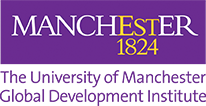Nicola Banks and Gijs van Selm
Localisation. Locally Led Development. Shift the Power.
These phrases have become fixtures in the language of international aid. They promise a simple but powerful idea: put resources and decision-making closer to the communities they are meant to serve.
But our new research suggests something uncomfortable — localisation, as it is often practised, can strengthen the grip Northern NGOs (NNGOs) have on the system, rather than loosen it.
Localisation as a Badge of Legitimacy
Our study, based on 53 interviews with NGOs in Ghana, Uganda and Europe, found that “doing localisation” has itself become a competitive advantage for Northern NGOs.
Institutional donors increasingly require localisation in grant applications. In response, NNGOs have learned to perform localisation — through public statements, joint branding, partner consultations — in ways that signal solidarity with Southern NGOs (SNGOs) but leave strategic control largely untouched.
In Bourdieu’s terms, NNGOs already hold the kinds of capital the aid system rewards:
- Economic capital – funding, donor relationships, and access to resources.
- Social capital – established networks and influence with decision-makers.
- Cultural capital – recognised management systems and accountability practices.
- Symbolic capital – legitimacy to set standards and define “good practice.”
By adopting the rhetoric of localisation, NNGOs enhance their symbolic capital without having to redistribute significant economic or strategic power.
One SNGO leader put it plainly:
“They have the existing relationships with donors… so they lead the processes in all these things.
Whose Capital Counts?
SNGOs bring enormous strengths to the table: deep community trust, lived knowledge, contextual expertise, and cost-effectiveness. But the aid field rarely recognises these as “capital” worth funding.
These assets don’t easily “translate” into the logframes, metrics and compliance systems Northern donors view as legitimate. Competing for authority in localisation processes often requires SNGOs to invest time and resources adapting to Northern norms — an investment they can ill afford.
As one Southern leader told us:
“When your hand is in somebody’s mouth all the time, you are careful not to make them angry — because you could be bitten.”
This dependency creates a high opportunity cost: SNGOs that spend time positioning themselves for donor approval have less capacity to respond to pressing community needs.
Even initiatives designed to “build local fundraising capacity” can become part of the problem. Instead of valuing the capacities SNGOs already have, they train them to “think and speak like the North” in order to qualify for funding — eroding the authenticity of community-led priorities in the process.
The Localisation Echo Chamber
The research also found that much of the localisation conversation takes place in a Northern echo chamber. NNGOs cite each other’s projects as “good practice,” set the benchmarks for what counts as localisation, and rarely reference examples led by SNGOs themselves.
As one Northern interviewee reflected:
“Global North organisations are in danger of colonising the conversation about decolonising.”
The result is a self-reinforcing cycle in which the power to define localisation remains firmly in Northern hands, even when delivery is delegated to Southern partners.
Why This Matters
Localisation was meant to challenge the deep, historically rooted power imbalances of the aid system — imbalances shaped by colonial legacies and reinforced through modern funding and accountability structures.
But when the authority to define and measure localisation sits with NNGOs, the result can be localisation in name only. It becomes the Emperor’s New Clothes of aid reform: a fresh outfit draped over the same old structures.
Towards Locally Led Authority
If localisation is to fulfil its promise, the focus must shift from local delivery under Northern direction to local authority over resources, priorities, and standards.
That means:
- Funding and supporting SNGO-led networks and consortia directly.
- Creating platforms where SNGOs define what “good” localisation looks like.
- Valuing and resourcing the forms of unique capital that SNGOs already hold alongside their technical and managerial capacities, including their community relationships, contextual expertise, and long-term presence.
- Recognising that Northern organisations may need to step back from intermediary roles rather than rebrand them.
Some innovative organisations, like One World Together, are already building the infrastructure to bring the public into this way of giving, cutting out intermediaries and getting generosity directly to communities. By pooling small monthly donations into significant, long-term, flexible funds, they ensure local organisations have both the resources and the autonomy to act on their own priorities.
Only by moving in this direction can localisation evolve from a well-meaning slogan to a genuine shift in power.
ChatGPT played a leading role in producing this blog post. We found this to be significant time-saver in summarising the overall story and content of our research in an audience-friendly way. It took not much more than an hour of time to upload the paper, design our prompt, give further prompts and feedback based on the first version that was generated, and then to make human edits and additions to the finished version that we were happy with.
Note: This article gives the views of the author/academic featured and does not necessarily represent the views of the Global Development Institute as a whole.
Please feel free to use this post under the following Creative Commons license: Attribution-NonCommercial-NoDerivatives 4.0 International (CC BY-NC-ND 4.0). Full information is available here.

